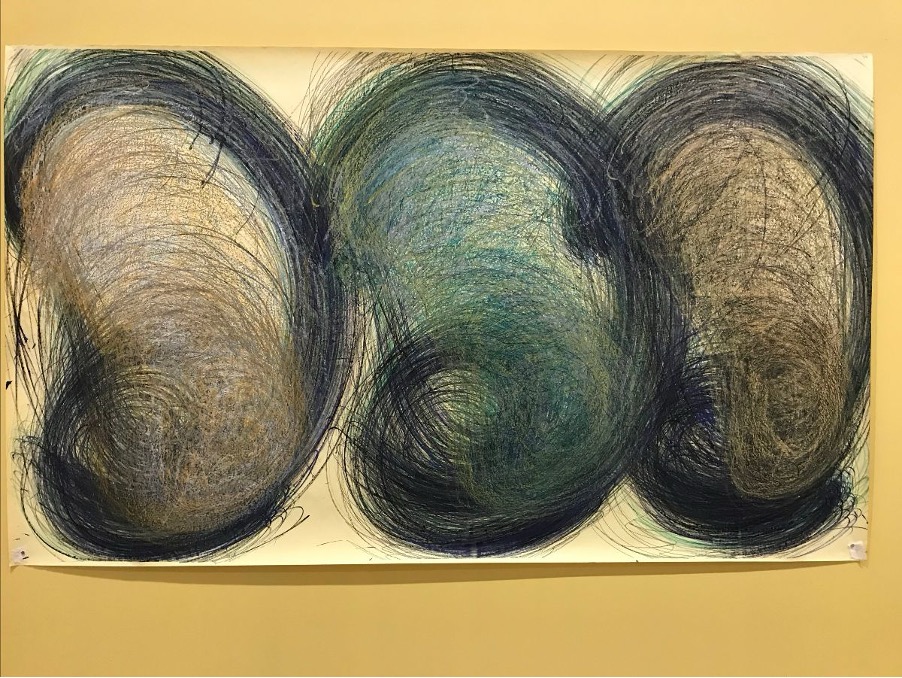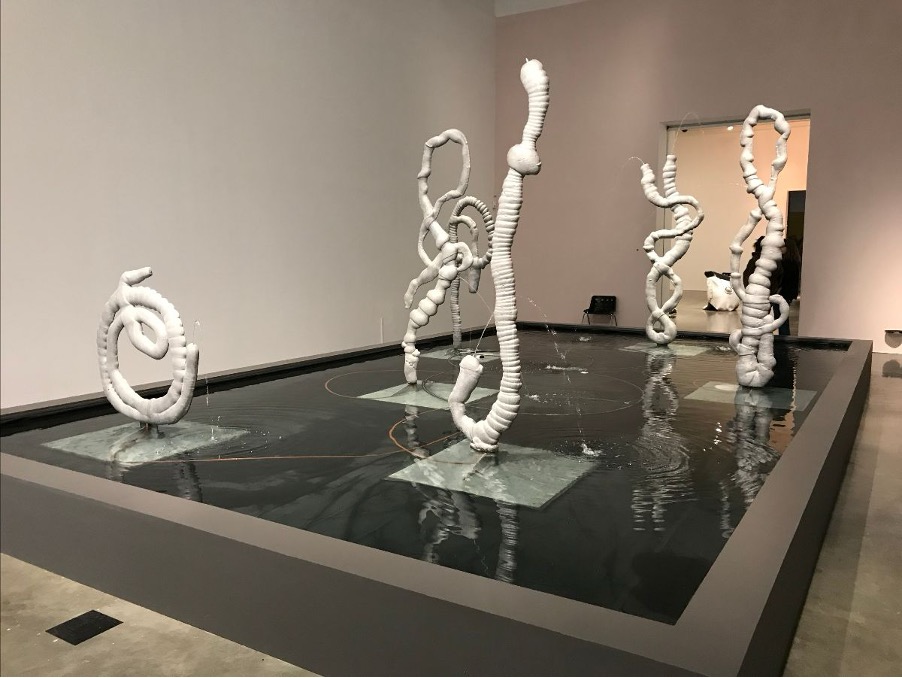It’s not always necessary to traipse into central London to find really interesting and inspiring contemporary art. I recently went north from where I live, to the wonderful, modern MK Gallery in downtown Milton Keynes, to see the thought-provoking, group exhibition; Trickster Figures: Sculpture and the Body. The eleven, British-based artists involved took contrasting approaches to the body and employed a wide range of techniques, objects and materials to make their work, including crab shells, tree roots, resin, shopping bags, hosiery, aluminium, plastic tubing to a dance floor and a large water feature. Here’s a little about three of them.

Nnena Kalu
Glaswegian-born Nnena Kalu has, for about 20 years, been creating a large body of sculptural and two-dimensional works, some of which involve performance. She works with ActionSpace; a leading organisation supporting the development of artists with learning disabilities.
Kalu’s action drawings on paper, including the Drawings 2021-22 shown here, use a variety of drawing media such as acrylic paint pen, permanent marker, oil pastel, graphite and chalk pen. They are direct, expressive products of her energetic, physical and rhythmical motion, and an exploration of time and space, dictated by the length and reach of her arms.
The works are often made and developed in pairs simultaneously, alternating between two sheets of paper with each one echoing the other almost like near-identical twins. Rhythm and layering are central to her technique.
Click here to see more of Nnena Kalu’s work and here to see a video of her in action.

Vanessa da Silva
Brazilian-born artist Vanessa da Silva explores aspects of displacement, movement of peoples and implications for identity, using polystyrene, resin, wood and acrylic paint. She makes organic objects that resemble contorted, balancing, swaying bodies as with the four figures in the work Uombee, shown here. The dynamism of these curving, muscular or bone-like forms, contrasts with the static yet flimsy and makeshift-looking rectilinear wooden frame.
Positioned at varying heights on the foldable frame, questions are posed by this work. Is this a children’s climbing frame or gymnastic bars? Or a clothes horse where the garments have come alive? Or something else. Are the figures human or non-human? Playing or escaping? Happy or desperate? Family or competing individuals?
Whatever they are, these supple yet ambiguous and amorphous forms defy easy identification or definition. The artist sees them as defying gender, age or body type and as almost wearable sculptures.
Hence, she says, the meaningless title, Uombee, has an unidentifiable, vibrating sound, and a spelling that can be pronounced and interpreted as the viewer wishes.
You can see the full, amazing range of Vanessa da Silva’s work on her website here.

Nicolas Deshayes
Nicolas Deshayes makes sculptural work that refers to circulatory systems that keep bodies, buildings or whole cities and countries functioning. This could include bodily functions of food intake, digestion and excretion, or heating and waste management.
The piece shown here comprises six separate but related cast aluminium and steel sculptures (including Gossip Column and Sugar Mile) placed in an indoors ornamental pond complete with fountains. Superficially referencing classical figures that might decorate the grounds of a stately home, their details more closely suggest dancing innards, intestines or even worms or ropes.
The sculptures are simultaneously playful, decorative, grotesque suggestions of the bodies that would normally conceal them.
You can see a fuller range of Nicolas Deshayes work here including the works on show in Milton Keynes but in different settings.
You might also want to take a look at the work of some of the other artists in the Trickster Figures show such as Alice Channer and Siobhan Hapaska.